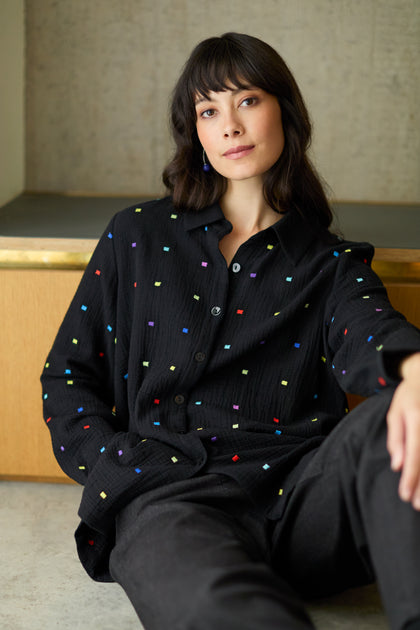Style & Life
The Urban Forager
Article By Sahara .
Jun 1, 2020

Returning to nature & wild foods with Wross

Firstly, congratulations on your new book! We would love to hear about how you started to understand the possibilities of foraging and how your love grew for it…
My interest in wild food began working as a commercial fisherman in South West Wales. Having an unlimited supply of fresh seafood made me wonder what else was out there that I could eat for free. I started out by picking samphire and sea cabbage to go along with the lobsters and bass I would take home from work, they were a match made in heaven and I hadn’t spent a penny. I was hooked. I spent the next couple of years learning all I could about wild coastal plants and what you could do with them. I had now been fishing for 5-6 years and needed a change, so I qualified as a tree surgeon.
I spent the next 2-3 years working in woodlands and rural landscapes, surrounded by a plethora of new plants I’d never seen before. They smelt, looked and felt far different from any of the coastal plants I knew so well, I had to know what they were, what family they were in, how they tasted, what strange and wonderful things could you do with them. Soon I started supplying a couple of local chef friends with wild garlic, samphire, sea cabbage and wood sorrel, just as a hobby, but a few more chefs began to ask me for things further and further afield and so I decided to quit tree surgery and give foraging a shot. I was soon supplying Abel and Cole, Borough Market, Harrods and many more and now I am celebrating my 10th year as a forager which has been wonderfully capped by the publishing of my very own book - The Urban Forager is available here.

Foraging may seem quite daunting to someone who lacks knowledge of what to look for. What would you say to people looking to take up foraging as a hobby?
Foraging can be daunting as there are lots of horror stories, but really, it’s as safe as you want to make it. Eating any old plant or fungus you come across is dangerous, but if you take a guidebook or 2 or 3 with you, you can triple check and cross-reference that what you have picked is the correct thing. Don’t pick any plants on big roundabouts or extremely busy roads as there will be heavy metals in the soil. A good idea is to take a beginner’s class, which are available in most major cities at the moment, and definitely in London. A good plant to start with at the moment is wild garlic, as it is in season, easy to identify and grows in abundance. You can’t really go wrong, as long as it smells like garlic you are in luck. When I go out picking I tend to take my guide books, a tote bag, some gloves and some scissors and remember when out foraging to only take as much as you need, and only a few leaves from each patch of plants, leaving some for the wildlife and other hungry foragers.
What do you enjoy most about the process of foraging?
The thing I enjoy most about foraging is the connection it gives you to your immediate surroundings. Knowing which plants you are walking past, and what stage of growth they are at. Getting excited that soon a little green shoot will emerge that you can put in a salad, or a berry to make jam with or a flower that you make a cordial from. I enjoy finding plants I’ve never seen before and researching what it is, where it’s come from and thinking about how I could use it. I enjoy the calm it brings me, the focus it gives me, the knowledge I get and the experience of being outside in all areas in all weathers because as I’ve learned over a lifetime of working outdoors, there is no such thing as bad weather, only bad clothing.

We would imagine that foraging takes patience and trial & error… As beginners, what foods are most accessible, and how much of a person’s diet can be found through foraging?
I would agree that foraging takes patience and trial and error, but I would say the same for learning any new hobby. And as with any other hobby, it is good to start with the basics. I would suggest reading about the handful of deadly poisonous plants we have here in the UK so that you definitely know what not to pick, and then when you do start to forage you will feel more secure in your ID. A good plant family, to begin with, is the thistle as there are no poisonous true thistles and there is plenty you can do with them. Other plants commonly found in urban areas are nettles, hairy bittercress, chickweed, plantain, three cornered leek, elderflower and cherry blossom. Using these plants, you can fill your larder with pestos, butters, soups, biscuits, drinks and much more.

If done irresponsibly, foraging can harm the natural world. How can people enjoy foraging and the fruits of their labour responsibly and sustainably?
Foraging should always be done responsibly and with wildlife in mind. Picking all the flowers from a single shrub, or all the leaves from a patch of vegetation can change the dynamics of that ecosystem that is in play there, a literal butterfly effect in motion. Be sure to only take what you need and only a few pieces from each plant.
What role do you think foraging will play in the future of our food supply?
Foraging has already affected our food supply. The rise in population of wild food through fine dining has seen plants like marsh samphire and wild garlic put onto the shelves in supermarkets giving us more variety and more nutritious options to take home. But I would always recommend picking it for yourself.
Are there additional health benefits from foraged foods compared to other farmed fresh produce? What healthful ingredients grow abundantly in the UK?
Wild food is packed with all kinds of antioxidants, nutrients, vitamins and minerals not found in cultivated produce. This is because the plants are wild, so they need their makeup to be stronger to survive, which means they are made from tougher stuff. We are what we eat, and eating these plants is so much more beneficial for us. After all, it is what our ancestors survived on before agriculture was put in place. Take dandelion, a common plant everybody knows, and walks passed without thinking twice. When compared to spinach it is a nutritional powerhouse. Containing 8 times more antioxidants, five times more vitamin K and E, three times more vitamin A and twice the calcium. Vegans may be interested to know there is a common hedgerow plant called greater stitchwort that contains the elusive vitamin B12.
Lots of these plants have medicinal properties also. Like meadowsweet for example. In the late 1800s, salicylic acid was extracted from the plant to go on to create the aspirin. The spirin part of the name is taken from meadowsweet’s scientific name ‘spirea’.

For those of us living in urban areas, where are the best places to forage?
The best place to start would be in parks and near the waterways, and obviously, any place that you can think of that is overgrown and a bit wild looking. Cemeteries often throw up a few gems.
What isolation friendly recipes have you been turning to during lockdown? Are there any seasonal ingredients we should look out for during the summer months?
I have been making lots of soda bread, you just need flour, bicarbonate of soda, milk, lemon, honey and I have been chopping up mugwort into it for extra flavour. Wild garlic is out at the moment and Elderflower is one to be looking out for very soon, it is such an iconic English scent and a true taste of summer for me.
Finally, what can we expect to find in the pages of your beautiful new book?
My book is a guide to the wild plants found all over the world in urban environments. It was written to enable anybody that likes the idea of wild food to give foraging a go. It includes beautifully detailed photography and descriptions of 32 wild plants that can be picked in our towns and cities. Each plant is accompanied by a very simple but delicious recipe. I hope you like it!
Discover The Urban Forager Book




